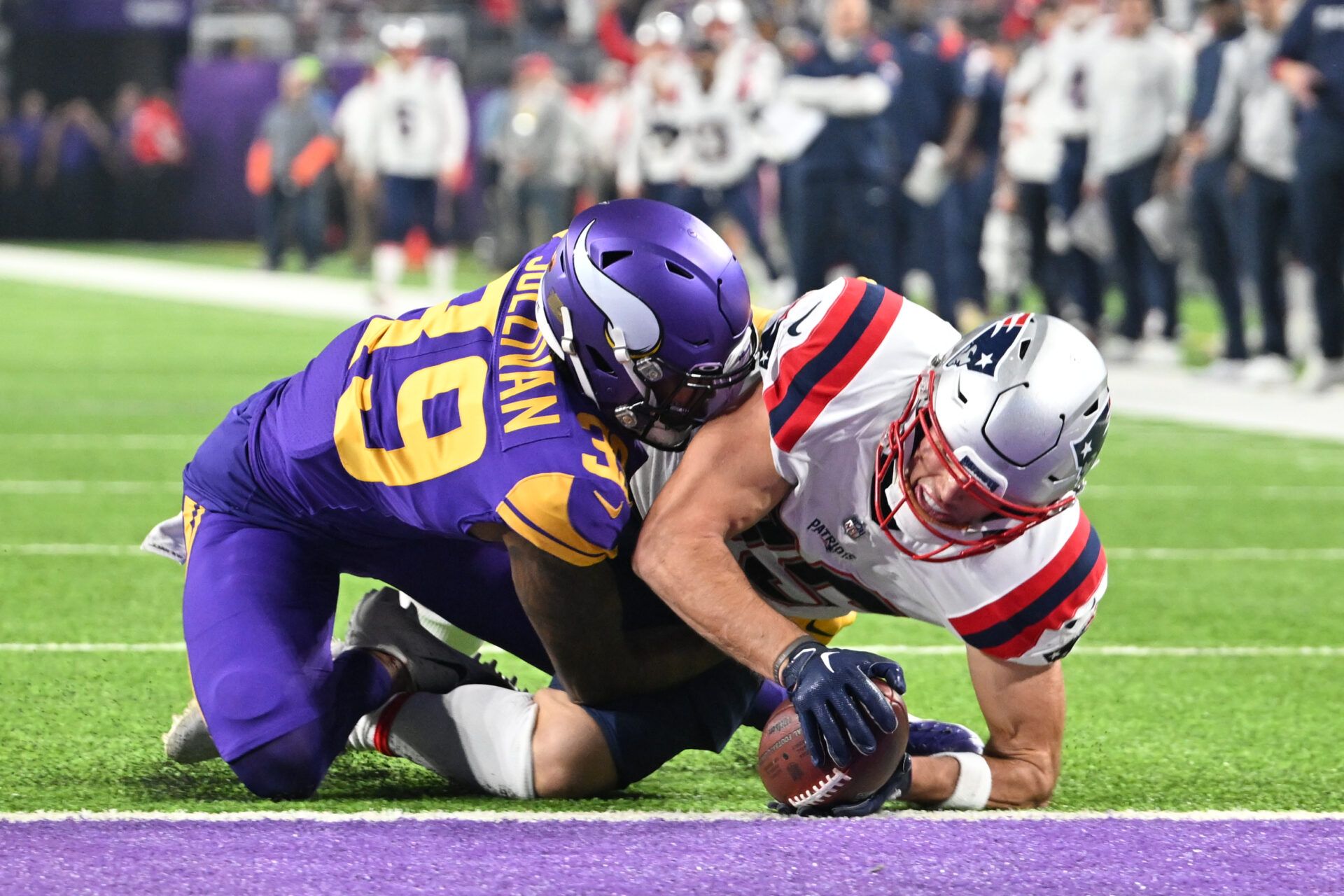What is a catch in the NFL?
Fans seemingly ask that question every week. Just when you feel like you have a strong grasp of the current version of the league’s completed-catch rule, a controversial play reveals a little-known nuance that leaves everyone confused.
So, let’s look at the exact rules for a catch in the NFL.

Completed Catch in the NFL, Explained
Below is the full verbiage from the NFL’s official rulebook:
A player who makes a catch may advance the ball. A forward pass is complete (by the offense) or intercepted (by the defense) in the field of play, at the sideline, or in the end zone if a player, who is inbounds:
A. Secures control of the ball in his hands or arms prior to the ball touching the ground; and
B. Touches the ground inbounds with both feet or with any part of his body other than his hands; and
C. After (a) and (b) have been fulfilled, performs any act common to the game (e.g., tuck the ball away, extend it forward, take an additional step, turn upfield, or avoid or ward off an opponent), or he maintains control of the ball long enough to do so.
Notes:
- Movement of the ball does not automatically result in loss of control.
- If a player, who satisfied (a) and (b), but has not satisfied (c), contacts the ground and loses control of the ball, it is an incomplete pass if the ball hits the ground before he regains control, or if he regains control out of bounds
- A receiver is considered a player in a defenseless posture (See 12-2-7) throughout the entire process of the catch and until the player is capable of avoiding or warding off the impending contact of an opponent.
- If a pass is caught simultaneously by two eligible opponents, and both players retain it, the ball belongs to the passers. It is not a simultaneous catch if a player gains control first and an opponent subsequently gains joint control. If the ball is muffed after simultaneous touching by two such players, all the players of the passing team become eligible to catch the loose ball.
- If a player, who is in possession of the ball, is held up and carried out of bounds by an opponent before both feet or any part of his body other than his hands touches the ground inbounds, it is a completed or intercepted pass. It is not necessary for the player to maintain control of the ball when he lands out of bounds.
Controversial Examples of Catches Ruled Incomplete
The apparently subjective nature of some aspects of the rule has led to myriad controversial plays over the years. An “additional step” is easy to understand, but other “football moves” can be considered more nebulous.
With that in mind, let’s look at a few recent examples controversial catches/incompletions
Week 5: Ja’Lynn Polk
In this example, New England Patriots wide receiver Ja’Lynn Polk’s touchdown was ruled incomplete because of the so-called “toe-heel rule.” Basically, because Polk completed a full step with his right foot, starting with his toe, his heel also needed to land in bounds. Instead, his heel landed over the white line, thus making the catch incomplete.
Polk either needed to complete the full step in bounds or, unrealistically, immediately contort his body to instead fall out of bounds while doing a toe drag.
So you can drag or tap your second toe for a catch, but this isn't a catch by Ja'Lynn Polk?
What are we doing? pic.twitter.com/yFVveRlYZp
— Kevin Moore (@KMooreTV) October 6, 2024
Week 8: George Pickens
In this example, Pittsburgh Steelers wide receiver George Pickens’ touchdown was ruled incomplete because he didn’t get both feet in bounds. Yes, there were two instances of Pickens getting a foot in bounds — but it was the same foot twice.
This George Pickens play didn't end up being a catch 😬
(via @NFL)pic.twitter.com/rzsF9IvtWS
— B/R Gridiron (@brgridiron) October 29, 2024
Week 9: Garrett Wilson
In this example, New York Giants wide receiver Garrett Wilson’s catch was ruled a touchdown because, based on the rules, one shin equals two feet.
GARRETT WILSON TD CATCH OF THE SEASON WOW 😱
(via @nyjets)pic.twitter.com/wfLlYdbwwO
— SportsCenter (@SportsCenter) November 1, 2024

